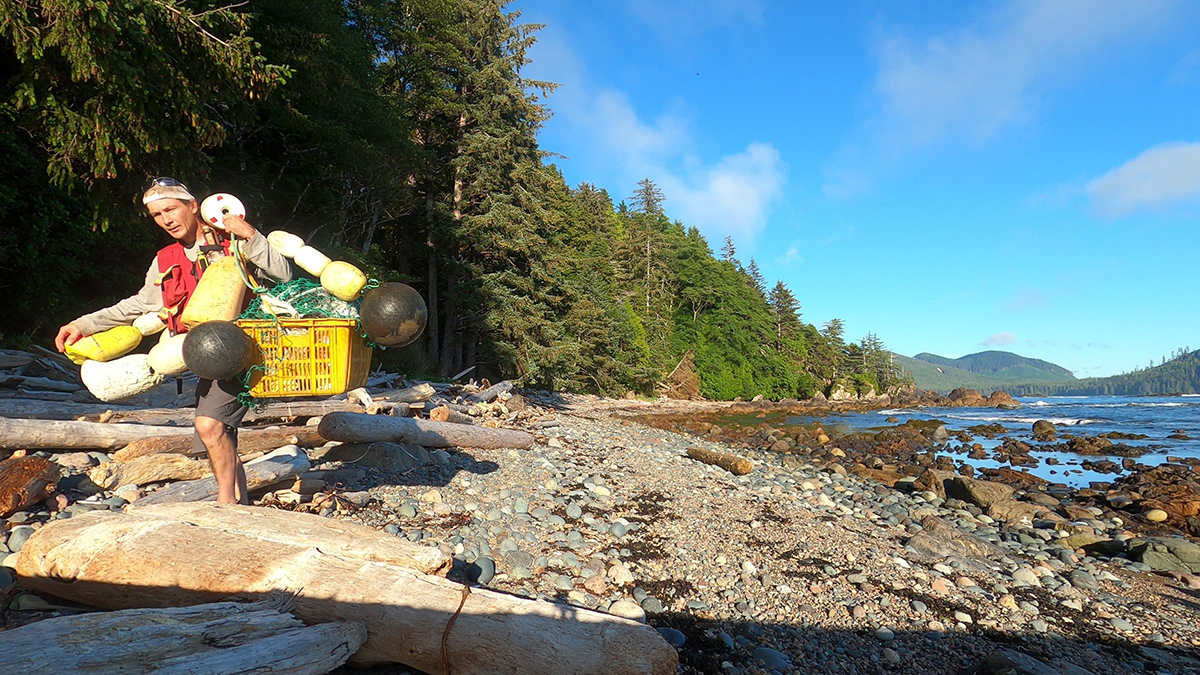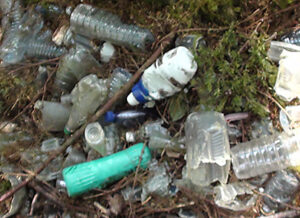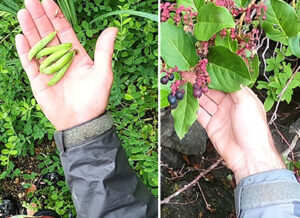BOARD NEWS
Why I do what I do
By David Jensen
You might ask, why would someone do what I do? Why would you trade carefree paddling and summer camping with friends and family for the challenges and risks of paddling 15 – 25 knot headwinds and gusts, with a two ft. chop and six ft. swell? Why would someone take risks like this to pick up plastic for weeks on end, piling and dragging bags of garbage weighing up to 150 lbs?

Pull up a chair, I'll tell you.
It all began with a French cream coffee sweetener bottle.
No, I wasn’t sweetening my coffee, I was hiking on the north west coast of Vancouver Island.
The plastic bottle had been bitten down by a wolf and then set into, with other broken-up pieces of plastic, a bedding site where the wolf would sleep during winter months and return to whenever it was travelling.

It got me thinking about how plastic might affect other wildlife. What do they do with the plastic they find? Yes, they can mistake the microplastics -- the little bits that have been broken down by the sun’s radiation and the ocean waves – for food.
I started to look at garbage, particularly plastic, in a completely different way.
Largely out of sight and out of mind, plastics quietly pile up on the coast. With few organized cleanups and poor waste management efforts, the ecosystem has become increasingly contaminated since plastics first began to wash up on the shores in the 1960s. Today, the garbage includes everything from the lost containers of cargo ships to derelict fishing gear and abandoned and wrecked vessels, to the water bottles and straws lost to the wind or carelessness.
In 2020, after the 2011 Tsunami where the winds and ocean currents pushed so much debris to our coastline, I was paddling from Port Hardy to Tofino and was appalled at the state of things. Disillusioned and more aware of the impact of plastic waste - I reached a point where avoiding buying plastic, and recycling what I did buy, just wasn't enough.
So, in the spring and summer of 2021, I took three weeks and cleaned up Lowrie Bay, on North Vancouver Island. I bagged well over a tonne and with Living Oceans, I found the resources to remove it all. I’ll never forget the feeling of looking back and seeing the beach as it should be, and as it was so many years ago.
This year, I had an opportunity to use my resolve and skills even further. I paddled approximately 100 km cleaning up approximately 20 km of coastline. I collected six or seven tonnes of garbage, exceeding my two-tonne goal by about five tonnes. That made me very happy, and words cannot express the joy I felt when I saw the areas I so painstakingly cleaned last year. Instead of plastic, there were plants, and not just any plants but food bearers like salal and peas, sea watch and silverweed and yarrow.

But it’s a fleeting moment of reward. I know that if we don’t remove the garbage (especially the plastic) every year, it ends up in layers too deep to reach and too entwined with the roots of trees and plants. And, over time it breaks down into microplastic and is inadvertently eaten by birds, fish and bears alike. As the microplastics break down even further to a point where they cannot be seen with the naked eye (called nanoplastic) it floats in the air and can enter the lungs and bloodstream of humans.
Our work is not done, next year I’ll be back on the North Vancouver Island coast collecting and removing as much debris as possible.
If you would like to help, we need your support
You can donate here if you’d like to get on board and help us in removing plastics and other garbage from our coastline and returning it to an environment that does not threaten the life of coastal communities and is a safe place for marine and coastal wildlife.
